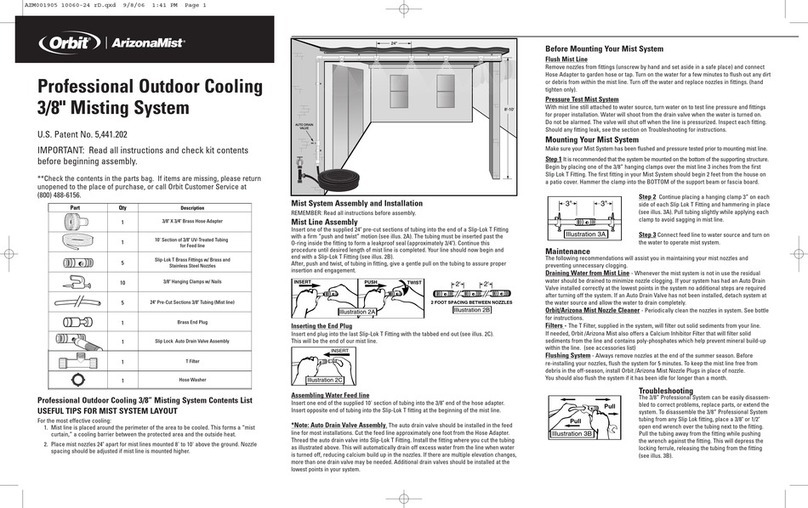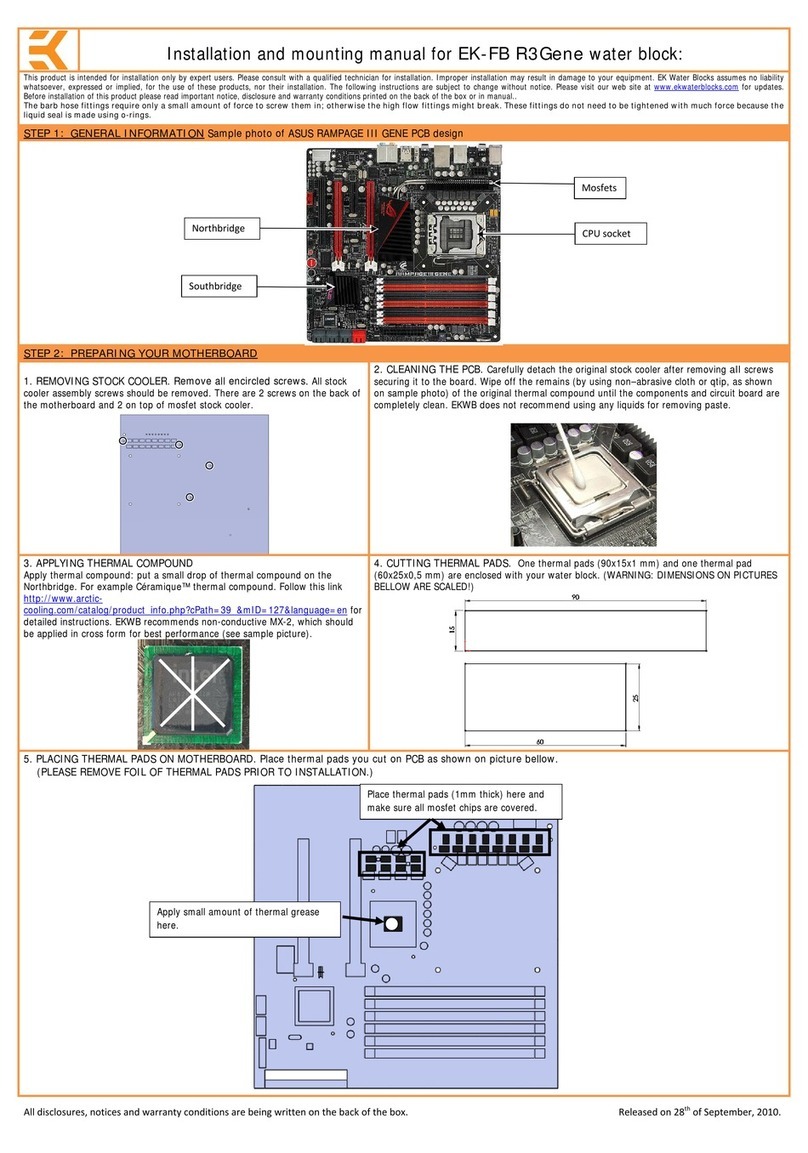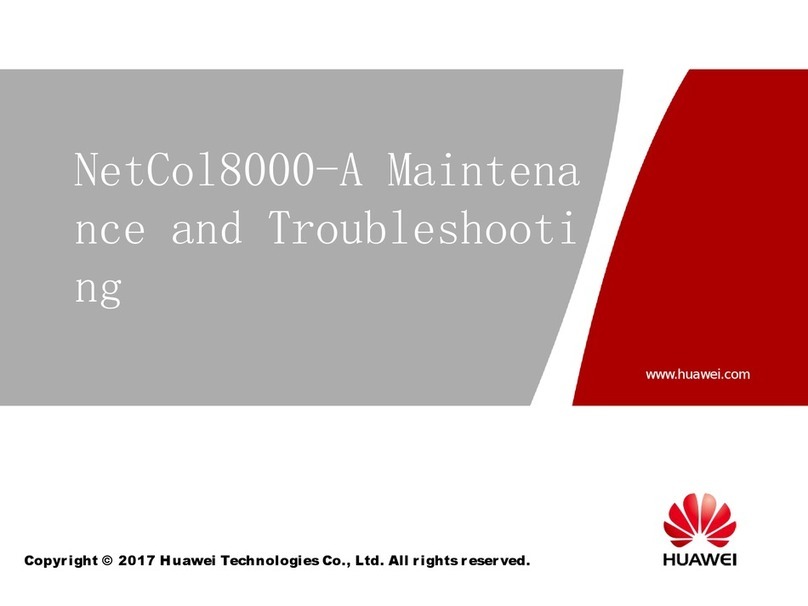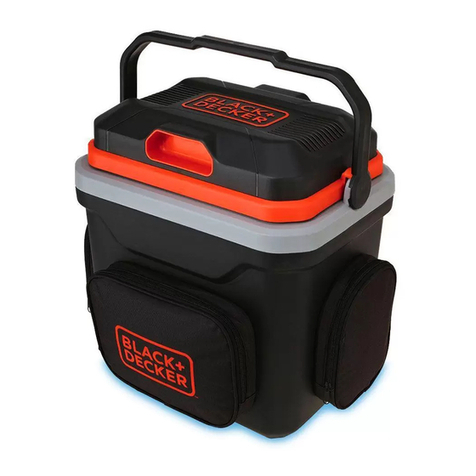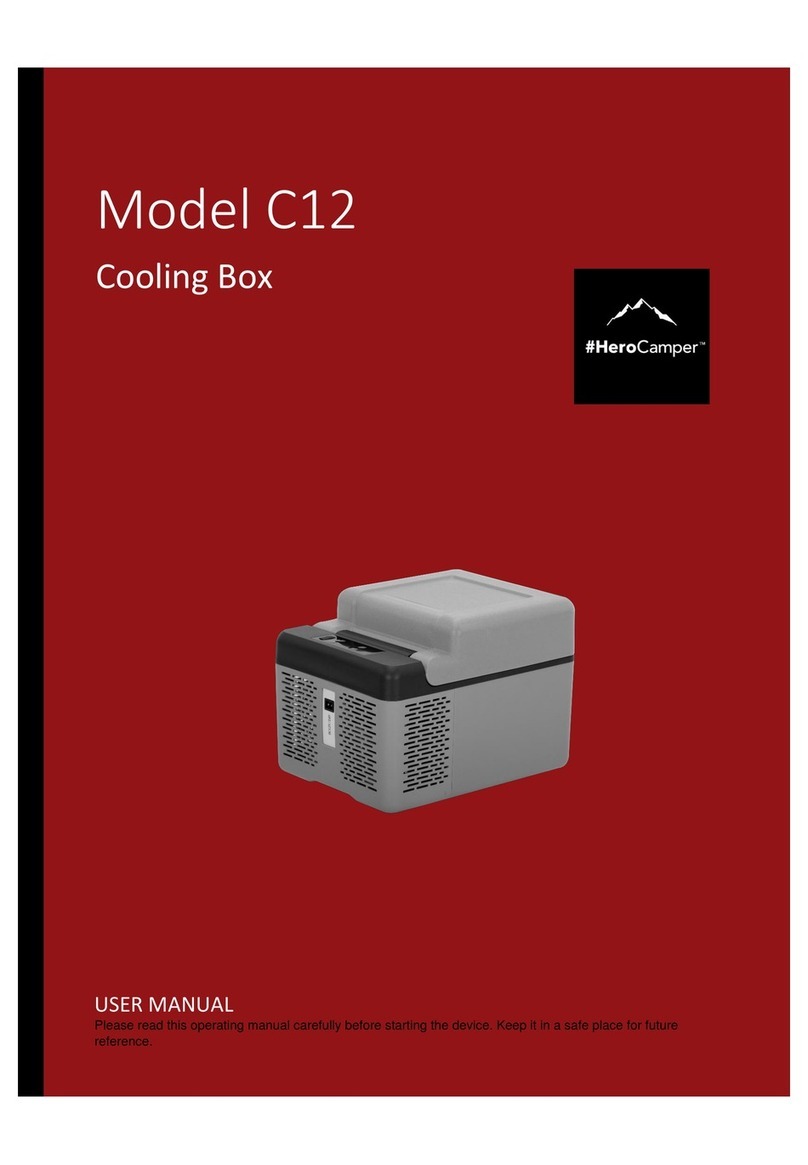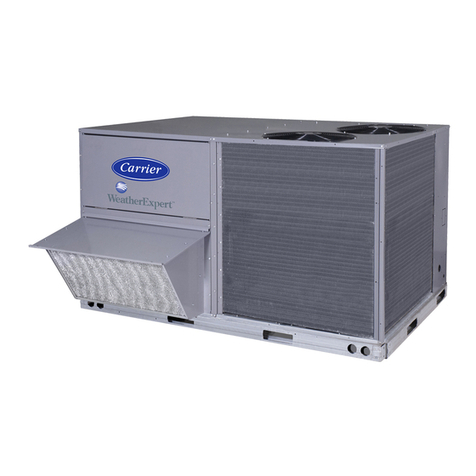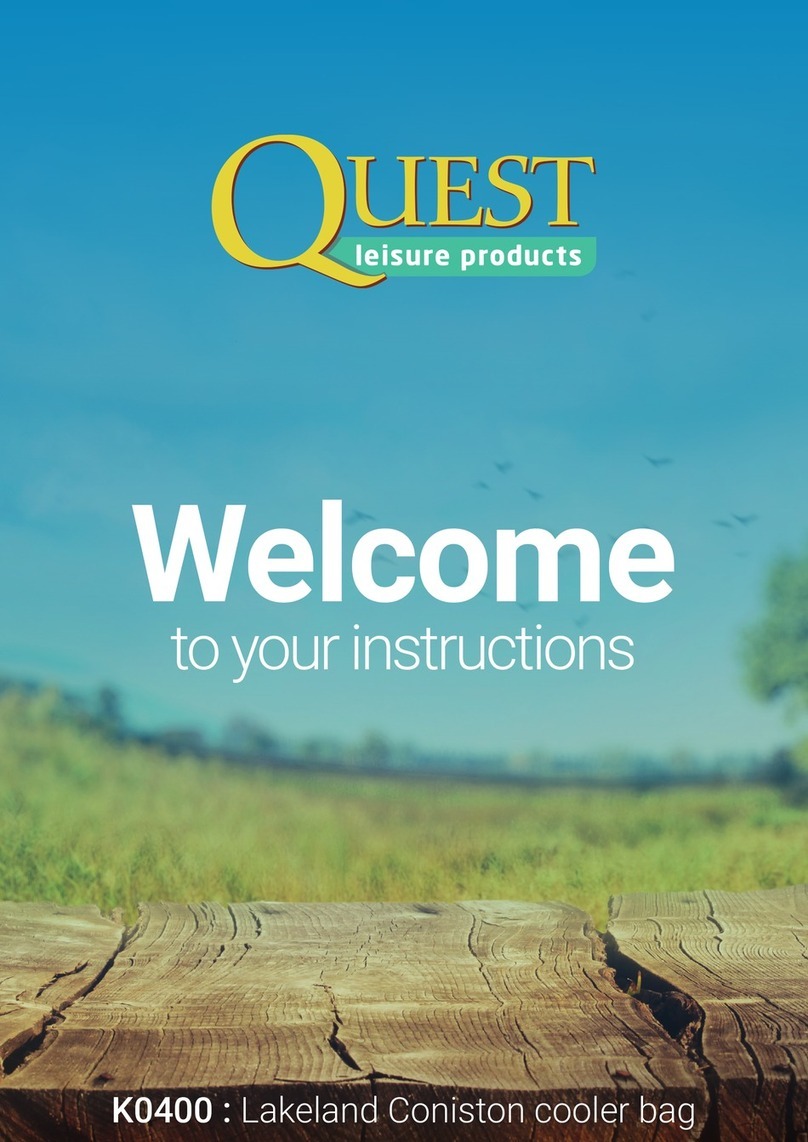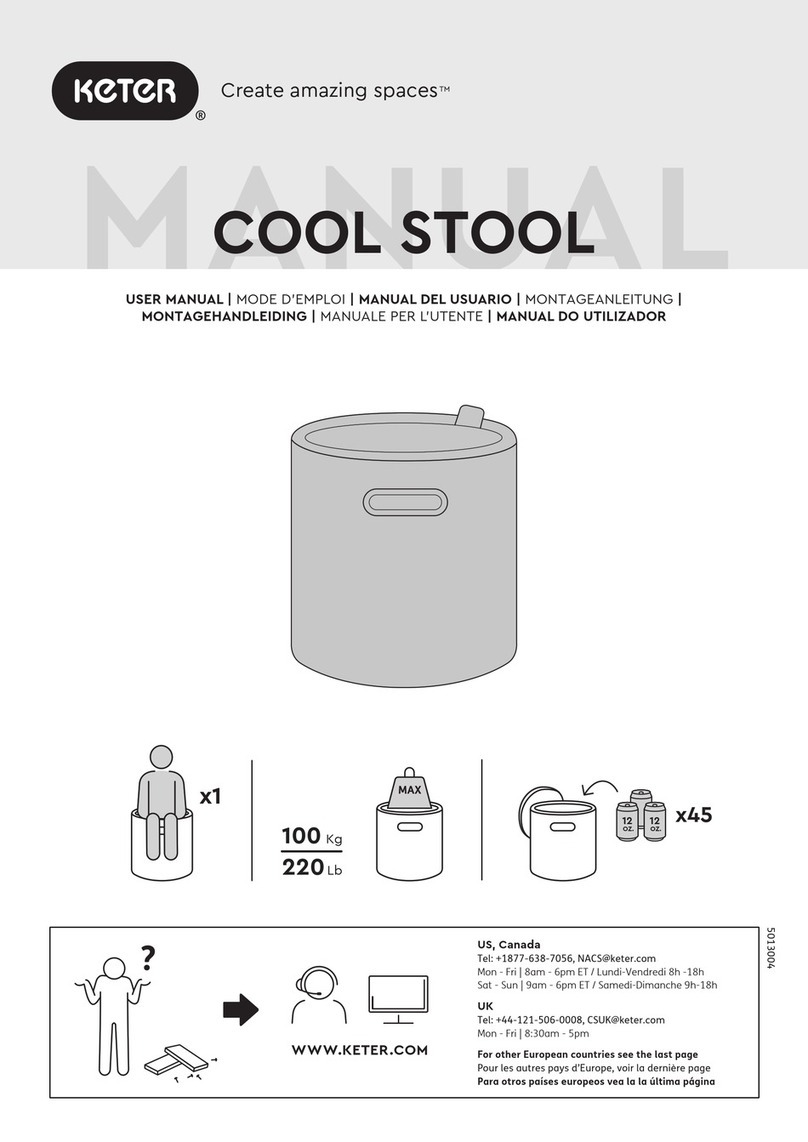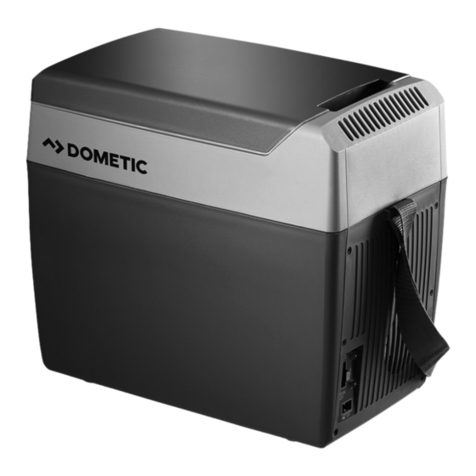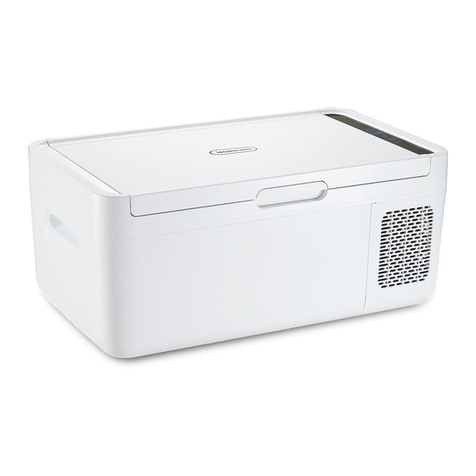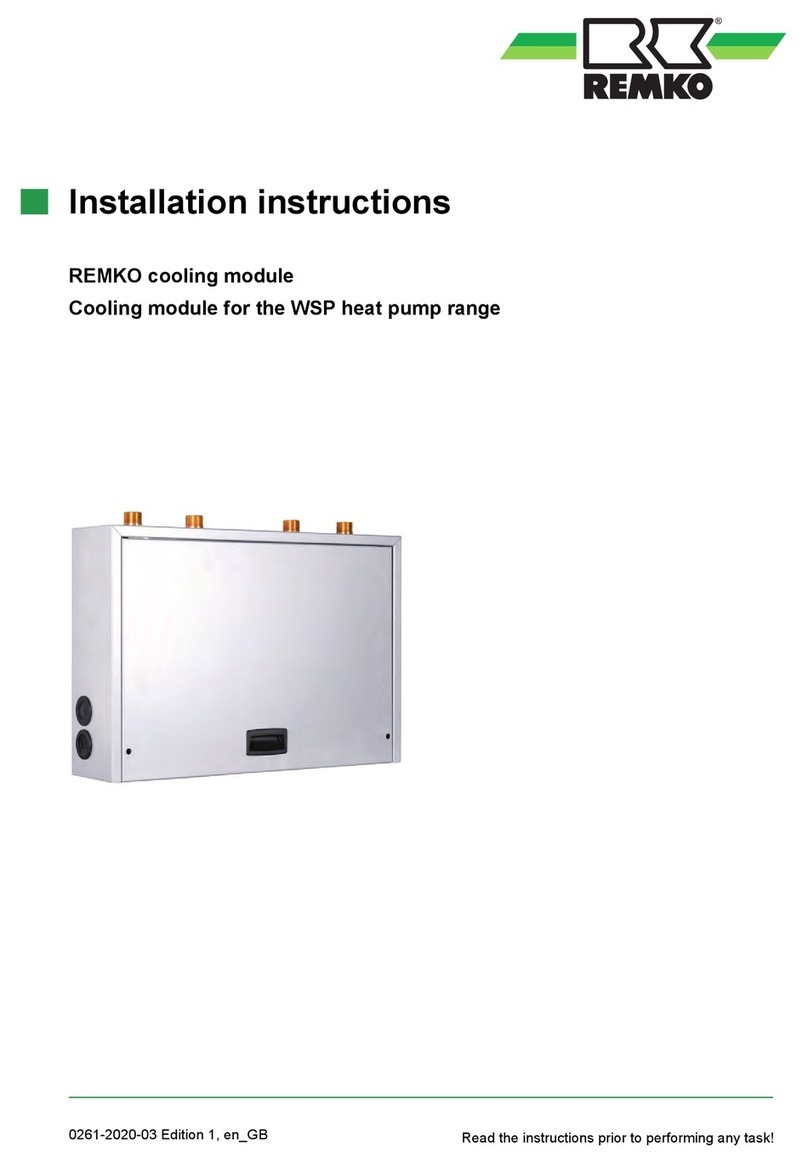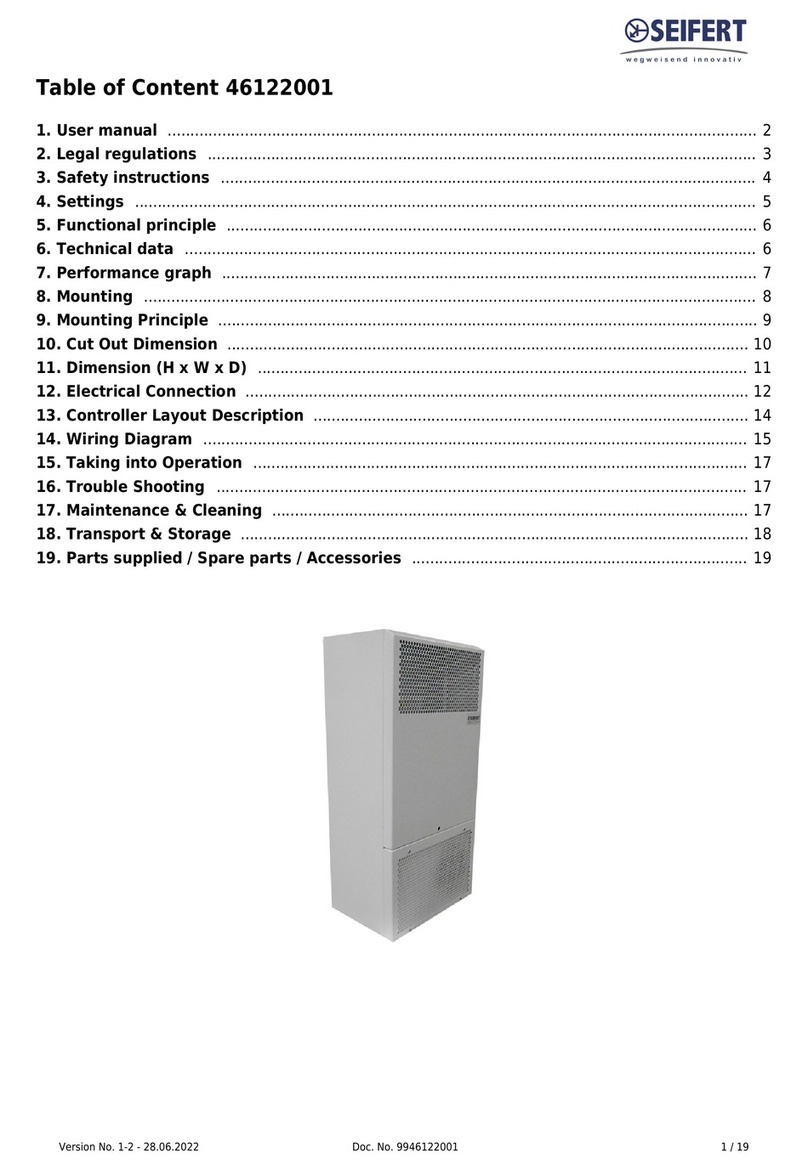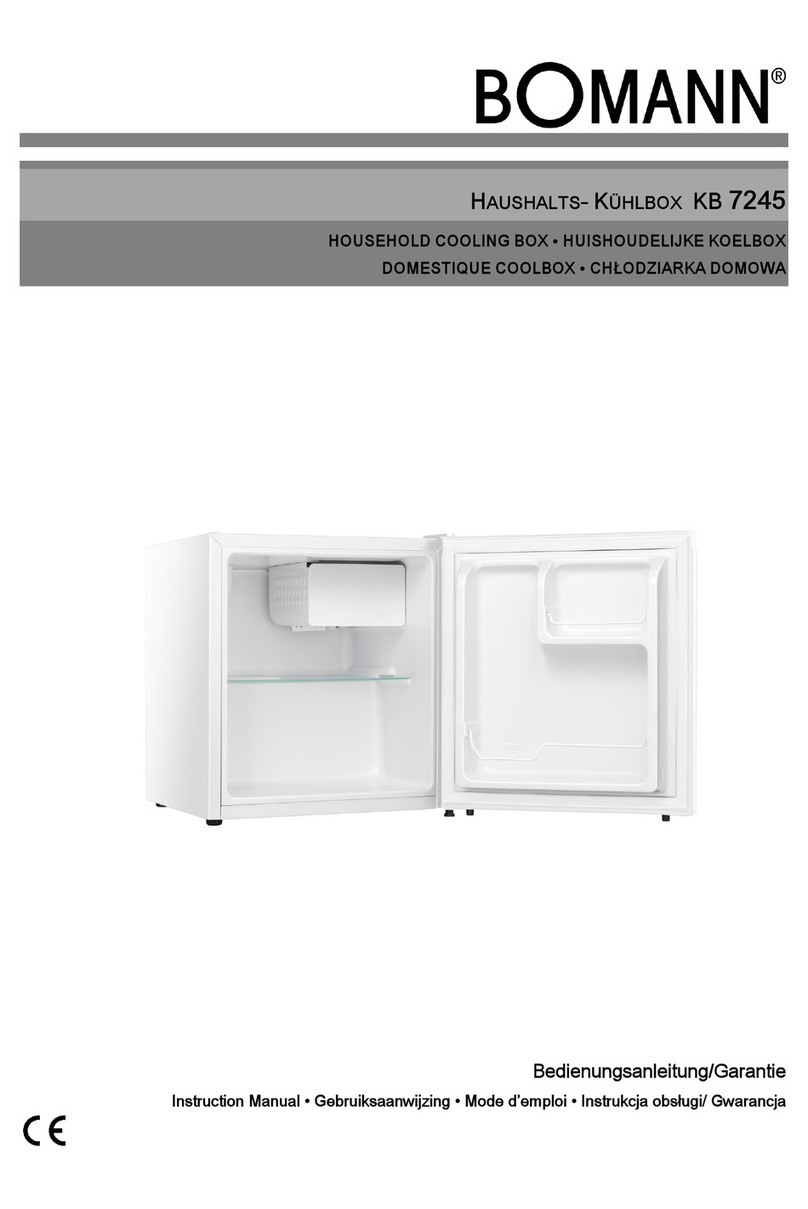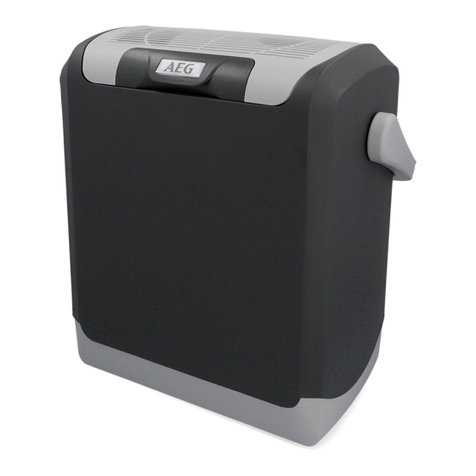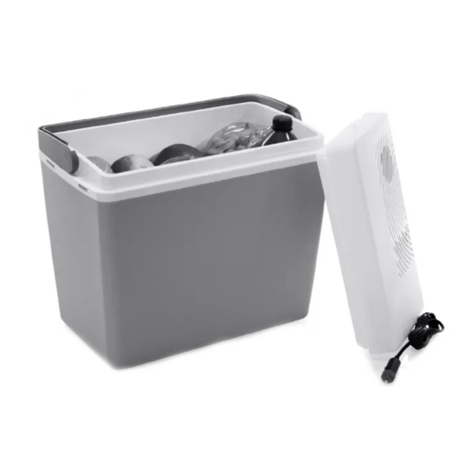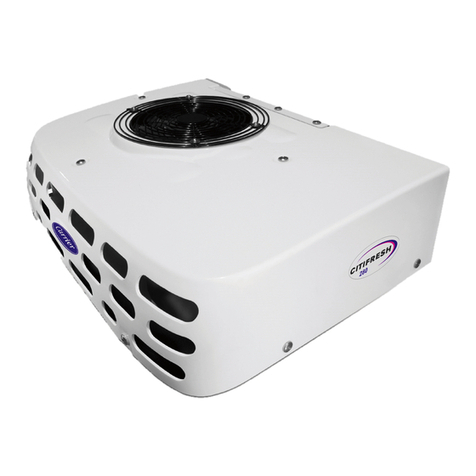
6
INSTALLATION
Storage
The 09FC free cooling units are designed for outdoor installations.
At times, a delay in construction or other factors require that a unit
be stored for a period of time prior to installation. The following
guidelines should be used for unit storage.
PROVIDE MACHINE PROTECTION
Place and store the unit in an area that will protect it from vandal-
ism, accidental contact with vehicles, falling debris or construction
waste. Ideally, do not remove the shipping protection such as the
coil protectors. This will provide additional protection for the unit.
The unit can be stored outdoors.
INSPECTION DURING STORAGE
To ensure faster installation when the time comes, the following
inspection schedule is recommended:
Every 3 Months
The 09FC units are shipped with a nitrogen holding charge in the
water loop. Check to be sure that there is positive pressure, at least
5 psig (34 kPa) in the water piping. If a circuit is found to be with-
out pressure, contact a qualified refrigeration mechanic. The sys-
tem should be pressurized to find the leak. It should be repaired
and recharged with nitrogen.
Every 6 Months
Check the unit for damage, both physical and from wildlife.
Check the unit for nests from rodents, birds, or insects. Depending
on location, these organisms can cause deterioration of compo-
nents which may result in failure. Consider an exterminator if nec-
essary. If damage is found and it will interfere with the installation,
consider repairing the damage before installation. Check the unit
control box for signs of moisture. If moisture is found, determine
the entry path and seal the leak.
Step 1 — Inspect Shipment
Inspect unit for damage upon arrival. If damage is found,
immediately file a claim with the shipping company. Verify proper
unit delivery by checking unit nameplate data and the model
number nomenclature shown in Fig. 1. See Table 1 for unit
physical data.
Step 2 — Rig and Place Unit
All units are designed for overhead rigging, it is important that
this method be used. Lifting holes are provided in frame base rails.
It is recommended shackles are used in the lifting holes (see rig-
ging label on unit and Fig. 4 for rigging weights and center of
gravity). All panels must be in place when rigging.
Use spreader bars or frame to keep the cables, chains, and straps
clear of the unit sides. Leave standard coil protection packaging in
place during rigging to provide coil protection. Remove and dis-
card all coil protection after rigging cables are detached.
Standard 09FC unit packaging consists of coil protection only.
Skids are not provided unless selected as a shipping option. If
overhead rigging is not available at the jobsite, the unit should be
placed on a skid or pad before dragging or rolling. Units with ex-
port shipping skid option, cannot be moved using rollers unless
there is a way to remove them first. When rolling, use a minimum
of 3 rollers. When dragging, pull the pad or skid. Do not apply
force to the unit. When in final position, raise from above to lift
unit off the pad or skid.
PLACING UNITS
When considering unit location, be sure to consult National Elec-
trical Code (NEC, U.S.A.) and local code requirements. Allow
sufficient space for airflow, wiring, piping, and service. The place-
ment area must be level and strong enough to support the operat-
ing weight of the unit. (See Tables 2 and 3.)
In areas where snow can be expected, consider the snow depth for
the location. The fan variable frequency drive (VFD) is equipped
with a cooling fan located on the bottom of the device. The unit
should be installed with the inlet of the VFD cooling fan at least
12 in. (304 mm) above the anticipated snow level.
Refer to Fig. 5-11 for airflow clearances. Recommended mini-
mum clearances are 6 ft (1829 mm) for unrestricted airflow and
service on sides of unit, 4 ft (1219 mm) on ends, and unrestricted
clear air space above the unit. Provide ample space to connect flu-
id lines to unit.
For multiple units, allow 10 ft (3048 mm) separation between air-
flow surfaces. See Fig. 3. If walls surround the unit, wall height
should not exceed the top of the unit fan discharge. Installation in
a pit is not recommended.
The unit may be placed at the end (opposite control box) of a
chiller, however assure there is space for piping between water
connections. Some chiller water connections are at the end of the
chiller and may not be accessible if 09FC is too close to it.
Fig. 3 — 09FC Multiple Unit Separation
IMPORTANT: To maintain unit stability while lifting, use a
minimum of 4 cables, chains or straps of equal length.
Attach one end of each cable to shackle attachment point
and the other end of each cable to overhead rigging point.
CAUTION
All panels must be in place when rigging. Failure to comply
could result in equipment damage.
CAUTION
For all unit sizes, do not forklift unit unless unit is attached to a
skid designed for forklifting. Failure to follow this caution
could result in equipment damage or personal injury.
* Minimum for when coils face each other. Less clearance is
required in other configurations.
† Clearance of 3.5 ft is required when a coil faces the wall. When
there is no coil facing the wall, see the certified drawing for the
required service clearance.
10 ft
(3.0 m)
MINIMUM*
3.5 ft (1.1 m)
MINIMUM†

